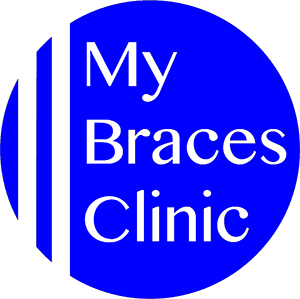
Image by Anna Caulley via P Dub
Adult teeth do not get replaced (unless you’re talking about dental implants) once they erupt into the mouth. Adult teeth are meant to serve us for the rest of our lives! It seems like a real shame to remove perfectly good, ‘innocent’ teeth to make space for braces treatment.
Are there ways to avoid dental extractions for braces treatment? Is there really no other choice?
Let’s look at the Top 3 Biomechanics strategy Orthodontists use to gain space without taking teeth out.
1. Expansion
Imagine a group of friends crowded together to take a We-fie, they are all bunched up. If you want to straighten/ align these friends, you get all of them to spread out a little. Everyone takes half a step outwards and sideways to gain space, this gives space to spread everyone out neatly.
This method of spreading teeth outwards and sideways is called Expansion. By moving teeth in the upper and lower jaws into a slightly broader arc, this creates space for alignment and straightening out mild-moderate crooked teeth.
Damon braces system, Invisalign, traditional fixed braces, expansion plates are some of the types of braces that can achieve this.
2. Distalization
When there’s a problem with the front car at a car park gantry, the cars behind it start to systematically reverse/move back to give space to ease the jam in the front. That’s the same principle of Distalization in orthodontic treatment, where we get the back teeth to move backwards and transfer the space created to the front teeth to straighten them out or bring them inwards.
Invisalign is an elegant system that can achieve space through distalization. Microimplants, Forsus Spring, Carriere® Motion 3D™ Class II Appliance are also some examples of ways to gain space through distalization.
3. Inter-Proximal Reduction (IPR)
When I try to squeeze into my skinny jeans, sometimes, well often times, I have to ‘suck it in’ to get myself all the way in. How I wish there was a little magic trimming that can shave off the little muffin top that hangs over the jeans. That ‘little magic trimming’ in the Orthodontic world is called Inter-Proximal Reduction. When teeth are a little too broad, inter-proximal trimming can be done to make space for crooked teeth to wriggle into place. The amount of enamel reduction ranges from 0.2mm to a maximum of 0.5mm (this is the width of a mechanical pencil refill lead). Care is taken to select teeth who’s morphology favours IPR, teeth with excessive enamel structure and to keep IPR within enamel. Research studies on IPR as a method of space creation has shown it to be a safe and effective way of relieving crowding.
Diamond strips, diamond discs and sandpaper strips are some of the ways to perform Inter-Proximal Reduction.
It is likely that your Orthodontist will use a combination of these 3 biomechanics strategies to gain space without having to remove teeth for braces treatment.
There are many factors to consider that affect the decision for extraction versus non-extraction for braces treatment.
Dental extractions for braces treatment can change lip support, lip shape, facial profile and the overall look of the patient.
The severity of the crooked teeth may make a non-extraction approach impractical or unsafe.
Therefore, the examination and diagnosis of the first consultation should be done in a systematic and detailed way. This should be combined with input from the patient and parents before presenting the various treatment options. Time should be given to digest the different approaches, the pros vs cons of each plan before making an informed decision. Removing adult teeth for braces treatment is an irreversible procedure and is a treatment choice that I do not take lightly.

Written by:
Dr POON Kee Hwang @mybracesclinic




